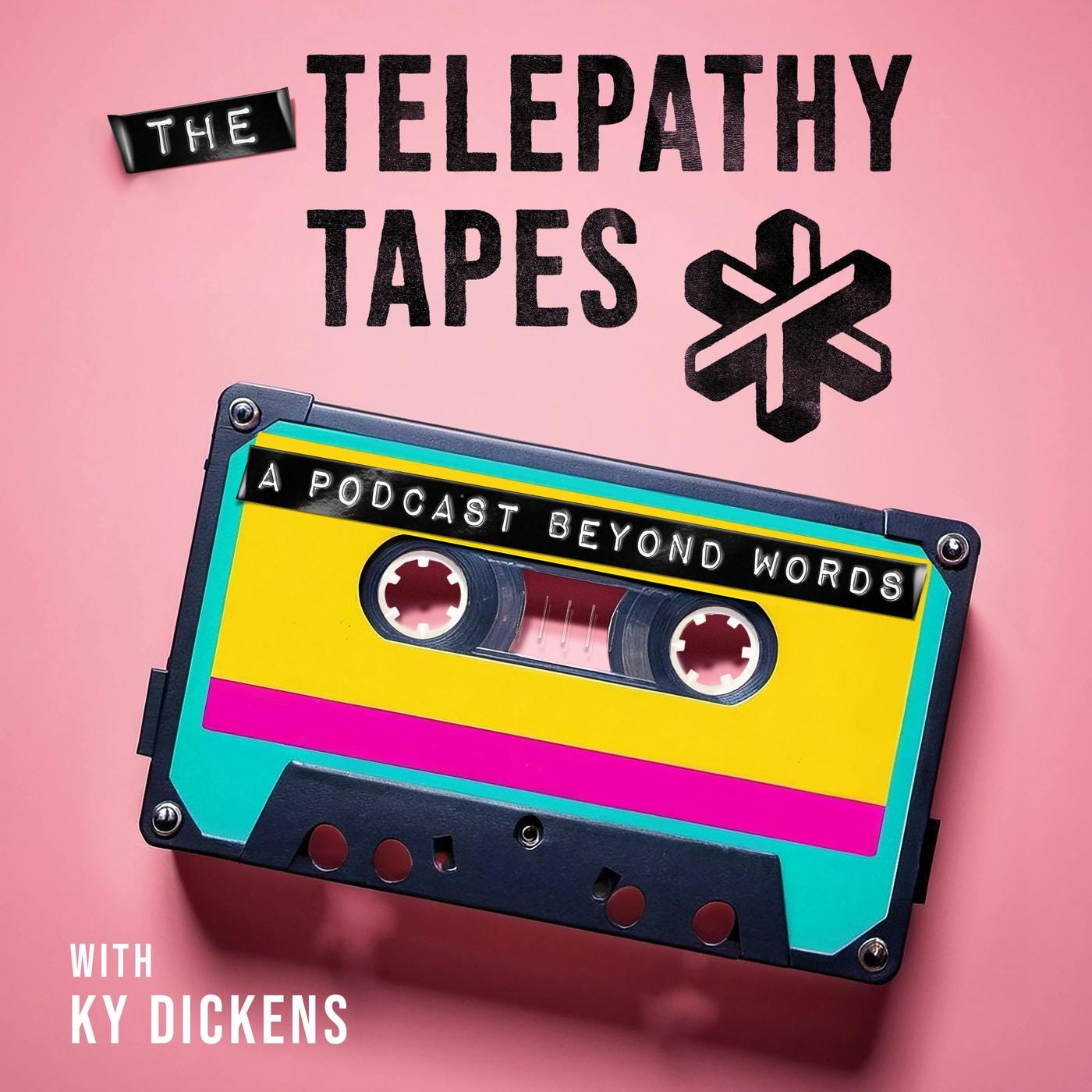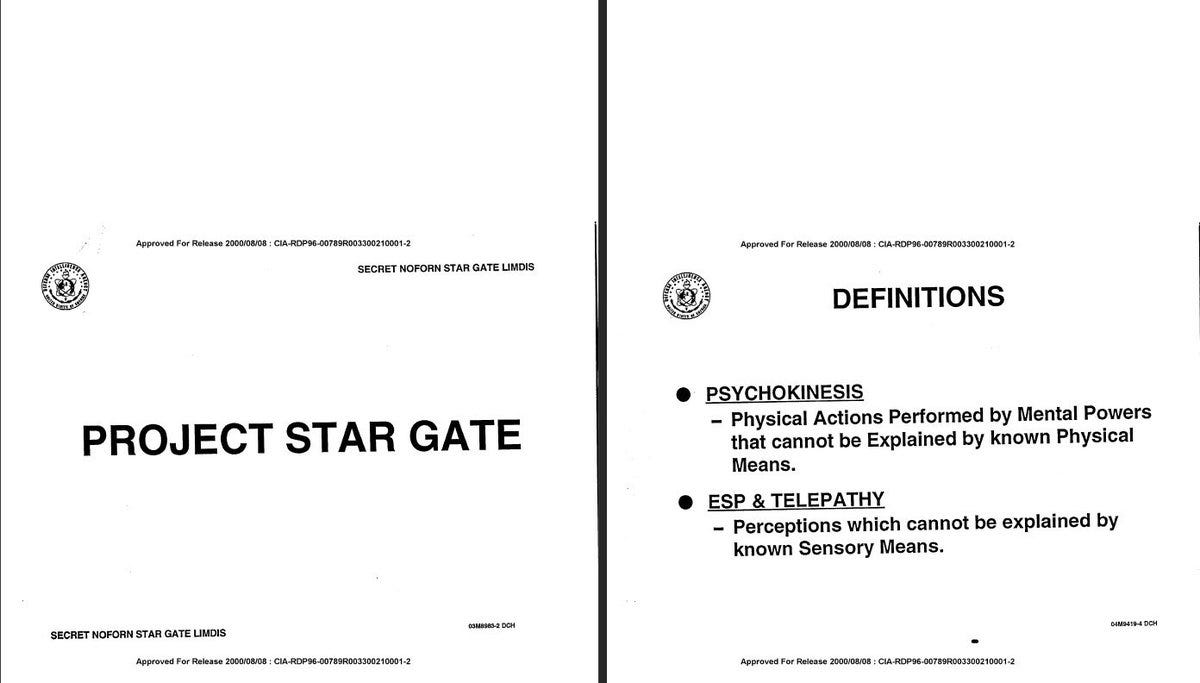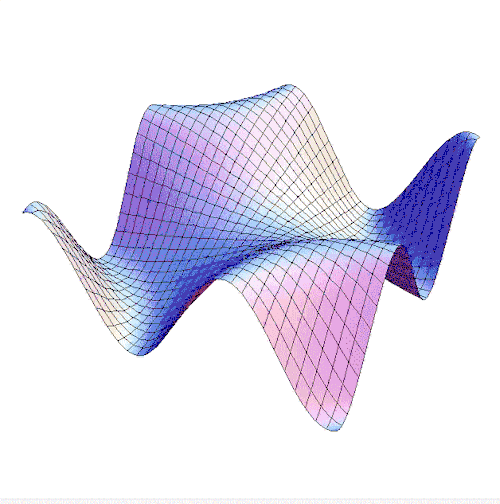There’s something predictable in the way mainstream journalism reacts when the edges of accepted reality are challenged. Case in point: some of the media response to The Telepathy Tapes—a wildly successful podcast that explores non-speaking autistic children who appear to demonstrate telepathic abilities.
Instead of investigating the implications, publications like VICE and The Times rushed to contain them. VICE labeled the show ‘a rollercoaster ride’ of ‘dubious premises,’ suggesting its popularity reflects a ‘post-COVID zeitgeist’ and growing public openness to fringe ideas and supernatural beliefs. The Times worried it undermines science itself. Skeptical Inquirer described the show as ‘an explicitly anti-science podcast’ and ‘a veritable cornucopia of pseudoscientific beliefs.’ Across the board, the coverage showed more concern with guarding the boundaries of consensus than exploring the possibility of a new paradigm.
For those who haven’t heard it, The Telepathy Tapes follows filmmaker Ky Dickens as she documents the abilities of non-speaking autistic individuals—children and young adults who appear to spell or type responses to questions they couldn’t have perceived through ordinary senses. At first, the podcast keeps a skeptical tone, acknowledging the extraordinary nature of the claims. But as the season unfolds, it slowly draws listeners into a world that’s difficult to dismiss. One child identifies the correct Uno card held behind his head. Another types out a word his mother is silently reading in a book. And then it opens further: introducing “The Hill,” an astral space where these nonspeaking individuals report meeting and communicating telepathically with one another—despite being scattered across the globe. The podcast doesn’t claim to explain these phenomena. It simply presents them, in all their unsettling clarity.
That presentation, however, was too much for many in the press.
Take the VICE article’s framing: it presents these children as vessels of parental delusion and the podcast as a hopeful distraction for a “less certain” public. One quote distills the tone perfectly. Science writer Jonathan Jarry, writing for McGill’s Office for Science and Society, echoes VICE in suggesting that the podcast’s appeal isn’t rooted in evidence, but emotion: “From being considered disabled, their child was suddenly humanity’s savior. Wouldn’t you want to believe that too?” The implication is that hope itself is a flaw—that the desire for connection or meaning automatically discredits what’s being witnessed. But wanting something to be true doesn’t invalidate it. If anything, it should sharpen our inquiry.
But beyond the condescension lies a larger failure—a refusal to engage with a century-long body of research that not only supports the claims made in The Telepathy Tapes, but has been accumulating for decades. The problem isn’t that this evidence doesn’t exist. It’s that too many journalists refuse to look at it.
Serious research into telepathy didn’t begin all that recently in fact. The Society for Psychical Research (SPR), founded in 1882, was one of the first scientific organizations to rigorously investigate telepathy, mediumship, and psi phenomena. Figures like Frederic Myers and William James didn’t just speculate—they conducted empirical studies, documenting cases of thought transference decades before modern neuroscience could offer a framework.
Declassified CIA files from the Stargate Project reveal over 20 years of funded research into remote viewing, ESP, and mind-to-mind communication. These weren’t fringe experiments. They were evaluated by government statisticians like Jessica Utts, who concluded the results were “far beyond chance” and that psychic functioning had been “well established.”
A groundbreaking 2024 study published in Cortex (Freedman et al.) used transcranial magnetic stimulation to inhibit the left middle frontal gyrus—essentially flipping off the brain’s filter. What happened next? Participants began influencing random number generators with their minds. Statistically. Repeatedly. The researchers’ conclusion? The brain may be hardwired to suppress psi. Turn off the inhibition, and telepathy—along with other extrasensory phenomena—starts to come through.
And the pattern isn’t isolated.
This is echoed by decades of replicated Ganzfeld telepathy studies, where “receivers” in sensory deprivation accurately described images sent by a distant “sender” at rates far beyond chance. The hit rates aren’t subtle. They’re consistent. They’ve been meta-analyzed. And they’ve held up better under scrutiny than many foundational studies in psychology.
Then there’s Daryl Bem’s now-famous time-reversed experiments at Cornell, where participants consistently responded to events before they happened. Or Julia Mossbridge’s meta-analysis of “presentiment,” showing that human bodies often respond to future emotional stimuli several seconds before those stimuli occur.
Scientists like Rupert Sheldrake have been quietly laying the foundation for this shift for decades—often at great personal and professional cost. His research into animal and human telepathy, dismissed as fringe by those unwilling to engage it, has held up under scrutiny far better than many accepted psychological studies. The Telepathy Tapes quotes him early on, but most coverage ignores what he actually represents: a biologist brave enough to take consciousness seriously, long before it became safe to do so.
This isn’t pseudoscience. It’s peer-reviewed. It’s published. And it’s just the tip of the iceberg.
But History repeats itself. The same media voices dismissing The Telepathy Tapes today would have ignored Rhine’s statistically significant ESP results in the 1930s, or the telepathic dream cases documented by Frederic Myers in the 19th century. Instead of investigating, skeptics have always relied on the same playbook: ignore the data, mock the researchers, pretend the field has no past.
And yet, the story hasn't ended—it’s simply evolved. In recent months, whistleblower testimony has surfaced alluding to the existence of U.S. “psionic assets”—individuals with telepathic or remote viewing abilities reportedly employed for tasks ranging from intelligence gathering to anomalous contact—what some insiders have described as attempts to “interface with nonhuman intelligence.” These claims haven’t been debunked. They’ve mostly been ignored. Because acknowledging them would mean admitting that The Telepathy Tapes might not just be a moving podcast—it might be documenting something real.
Nobel Prize–winning physicist Brian Josephson has long proposed that telepathy may be explained by quantum nonlocality—the same physics that allows entangled particles to influence each other instantaneously across space. Henry Stapp, a theoretical physicist at Berkeley Lab, argues that consciousness itself may interact with quantum fields, making mind-to-mind connection not just possible, but inevitable.
The Orch-OR theory of Penrose and Hameroff posits quantum coherence inside brain microtubules—essentially turning parts of the brain into quantum computers. That theory, once dismissed, is now gaining traction as new studies point to quantum effects in biological systems.
And yet, journalists keep doubling down. They cling to outdated frameworks, suggesting that parental hope, or spiritual language, somehow invalidates the phenomenon. They quote skeptics who haven’t run experiments, while ignoring researchers who have. They question the emotions of families rather than the data of researchers. So why does none of this make it into the articles that critique The Telepathy Tapes?
Because journalism, like science, has gatekeepers.
Articles like Psychology Today’s “The Biology of Telepathy” go even further, claiming that telepathy is biologically impossible—not because experiments have failed, but because the brain supposedly doesn’t work that way. But this isn’t science—it’s dogma. Science doesn’t progress by defending assumptions. It evolves by breaking them open.
To be clear, if the data in The Telepathy Tapes were being manipulated—or if parents or practitioners were knowingly influencing results—that would be dangerous. But that’s exactly why these cases demand real research, not ridicule. The concern about “pseudoscience” isn’t a reason to avoid investigation. It’s a reason to do it properly.
But if the story were reversed—if scientists found one inconsistent test of telepathy and parents claimed it proved nothing—they’d be dismissed as irrational. That’s not balance. That’s bias dressed as objectivity.
The success of The Telepathy Tapes isn’t just about curiosity—it’s about validation. Many of us already sense that human potential extends far beyond what the dominant narrative allows, and this podcast serves as a cultural marker of a shift that’s already happening. The first season is compelling on its own—non-speaking autistic kids communicating telepathically—but what really resonates is what this says about consciousness as a whole.
We’re at a point where the Newtonian materialist paradigm is no longer enough to explain what people are experiencing firsthand. The boundaries between science, consciousness, and intuition are dissolving—both in the lab and in lived reality. The real work now isn’t about proving what’s possible, but about reorienting our curiosity. What happens when we stop trying to fit new phenomena into outdated systems, and instead begin building new systems around what we’re actually discovering?
The Telepathy Tapes taps into that moment—it doesn’t just document the shift, it’s part of it. And the media, whether it’s ready or not, will eventually have to catch up.
The veil is lifting. The only real question now is whether we’ll have the courage to look through.
Author’s Note:
I was interviewed for the VICE article, but my quote—and the declassified CIA documents I shared—never made it in. The piece leaned into the same old framing: skepticism over substance, spectacle over science. What you’ve just read reflects the direction I had hoped that conversation would go.
At this point, we shouldn't still be asking if telepathy is real. That question has already been answered—many times over. The real question is why we keep suppressing it. Why are we so afraid to study, celebrate, and evolve with the parts of human consciousness that don’t fit inside old frameworks?
Update: Upon further review, the Vice article did link to the CIA files I shared within the article.
Referenced Media Coverage
VICE – “The Problem With the ‘Magical Children’ of the Telepathy Tapes”
https://www.vice.com/en/article/telepathy-tapes-podcast-autism/The Times – “The Telepathy Tapes review — this hit podcast has contempt for science”
https://www.thetimes.com/article/cbb184d6-3ea1-440f-901f-32962d8bd895McGill Office for Science and Society (Jonathan Jarry) – “The Telepathy Tapes Prove We All Want to Believe”
https://www.mcgill.ca/oss/article/critical-thinking-pseudoscience/telepathy-tapes-prove-we-all-want-believePsychology Today – “The Biology of Telepathy”
https://www.psychologytoday.com/us/blog/debunking-myths-the-mind/201804/the-biology-telepathyStuart Vyse – “The Telepathy Tapes: A Dangerous Cornucopia of Pseudoscience”
https://skepticalinquirer.org/exclusive/the-telepathy-tapes-a-dangerous-cornucopia-of-pseudoscience/
Scientific Research & Evidence
Freedman et al., Cortex (2024) – Brain inhibition and psi phenomena
https://www.sciencedirect.com/science/article/pii/S0010945223002733Bem, D. J. (2011) – Feeling the Future, Cornell University
https://doi.org/10.1037/a0021524Mossbridge et al. (2012), Frontiers in Psychology – Presentiment meta-analysis
https://www.frontiersin.org/articles/10.3389/fpsyg.2012.00390/fullStorm et al. (2010), Psychological Bulletin – Ganzfeld telepathy meta-analysis
https://doi.org/10.1037/a0019457Cardeña, E. (2018), American Psychologist – Review of psi research
https://doi.org/10.1037/amp0000236Utts, J. (1995) – An Assessment of the Evidence for Psychic Functioning (Stargate Project)
https://www.researchgate.net/publication/333228024_An_Assessment_of_the_Evidence_for_Psychic_Functioning
Declassified CIA Files & Projects
CIA Reading Room – Stargate Collection
https://www.cia.gov/readingroom/collection/stargateCIA Document: USSR Use of Telepathy
https://www.cia.gov/readingroom/document/cia-rdp96-00792r000600320004-3
Whistleblower & Military Testimony
Jake Barber on NewsNation – Psionic assets and psychic intel programs
NewsNation – “Veterans Say They Worked With Psionic Military Assets”
https://www.newsnationnow.com/video/veterans-say-they-worked-with-psionic-military-assets-newsnation/10382553/
Historical & Foundational Research on Telepathy
Society for Psychical Research (SPR) – Founded in 1882 to scientifically investigate telepathy, mediumship, and other psi phenomena
https://www.spr.ac.uk/Frederic W. H. Myers – Human Personality and Its Survival of Bodily Death (1903)
https://ia801309.us.archive.org/25/items/humanpersonality00myer/humanpersonality00myer.pdf
(A foundational text exploring telepathy, dreams, and consciousness from the co-founder of SPR)J. B. Rhine and the Duke Parapsychology Laboratory – Overview of early Zener card ESP studies (1930s–1950s)
https://www.britannica.com/biography/J-B-RhineJ. B. Rhine (1934) – Extra-Sensory Perception
https://archive.org/details/dli.ernet.470319
(Seminal academic work that introduced experimental methods into psi research)
Modern Scientific Continuation
Dean Radin (1997) – The Conscious Universe: The Scientific Truth of Psychic Phenomena
https://www.researchgate.net/publication/243772480_The_conscious_universe_The_scientific_truth_of_psychic_phenomena
(Comprehensive overview of psi research and statistical meta-analyses across decades)Rupert Sheldrake – The Sense of Being Stared At: And Other Unexplained Powers of Human Minds (2003)
https://www.sheldrake.org/research/sense-of-being-stared-at
(Includes decades of experimental research into telepathy in people and animals)Sheldrake's Experimental Database
https://www.sheldrake.org/research
(Open access summaries of his published telepathy and morphic resonance studies)









Excellent short essay. The pushback is pure reactive dogmatic Scientism, nothing to do with the scientific method itself. I'm endlessly fascinated by how threatened people are by the presence of any new or perceived anomaly and how necessary it is to annul its potency. May we all die in sterile rooms free of all enchantment!
It's also fair to note that a lot of our advanced communication technologies that we rely on today (anything that involves signaling of the RF spectrum like wifi for example) were developed in parallel to a lot of groudnbreaking exploration into psychic phenomena and the concept of non-local consciousness.
The dogma of a materialistic reality might literally be dogma beucase it's original proponents were scientists and philosophers working the industrial revolution who believed in the metaphysical existence of God acting as a 'great watchmaker.' Whereas the non-local consciousness theories are more in-line with Eastern schools of esoteric thought.
Materialistic scientists are more profitable to the corporate interests than scientists who believe we are all connected.